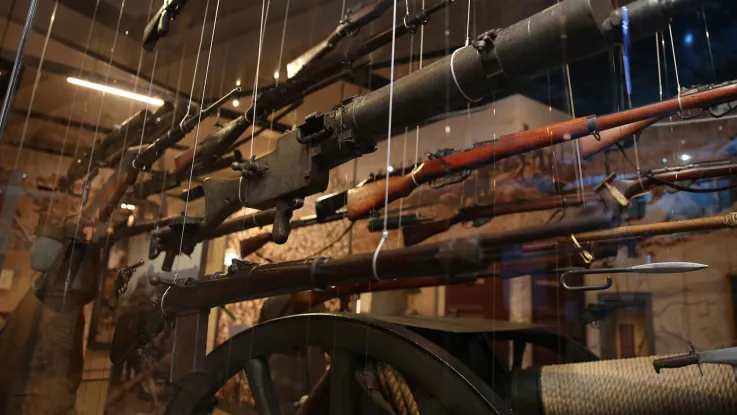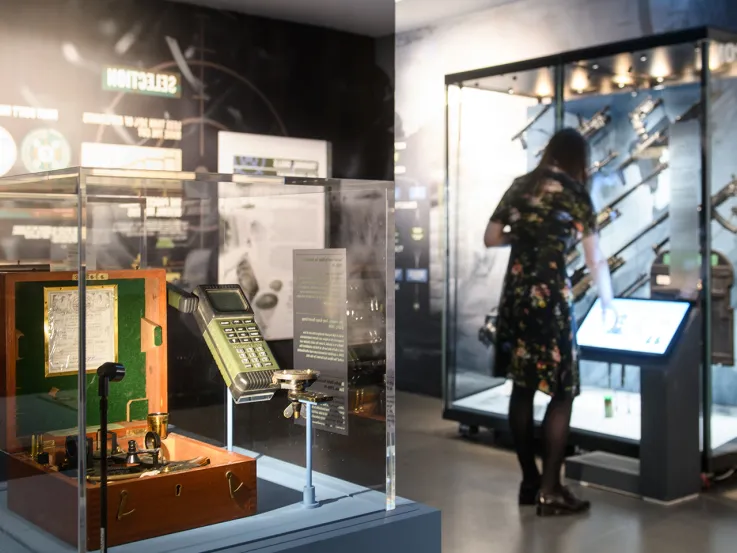Bofors anti-aircraft gun goes on public display for first time

Monday, 15 May 2023
Today, the National Army Museum installed a large Bofors anti-aircraft gun. The 4-metre x 2-metre gun is on public display for the first time at the Museum’s site in Chelsea, London.
The Bofors gun was a Swedish design adopted by Britain in 1938 for close-range defence against aircraft. During the Second World War, demand for anti-aircraft guns grew and the Bofors was widely produced by Allied countries including the United States and Australia.
Ian Maine, Assistant Director Collections and Programmes, National Army Museum, said:
'During conservation work, we discovered that this particular gun was made in 1943 at the Royal Ordinance Factory in Patricroft, Lancashire, (near Salford in Manchester). British-manufactured Bofors guns are scarce in preservation today, and this one bears testimony to the way Britain’s industry was increased to meet war-time demands.'
This installation of the Bofors gun coincides with the 80th anniversary of this type of gun's use in the Allied invasions of Sicily (9 July – 17 August 1943) and Italy (3 – 17 September 1943). Both campaigns can be explored further in the National Army Museum’s newly opened Conflict in Europe gallery.
Visitors can see the Bofors gun as part of a day out at the National Army Museum, which is free to enter from Tuesday to Sunday every week.
Notes to editors
For more information, please contact the National Army Museum Communications Team at press@nam.ac.uk
About the National Army Museum
The National Army Museum shares the history and heritage of our soldiers and their service in the Army, across the globe and down the centuries. Through our collections we explore the history of the Army from its origins to the present day. We aim to engage and inspire everyone with the stories of our soldiers and how their service shapes our world; past, present and future.



